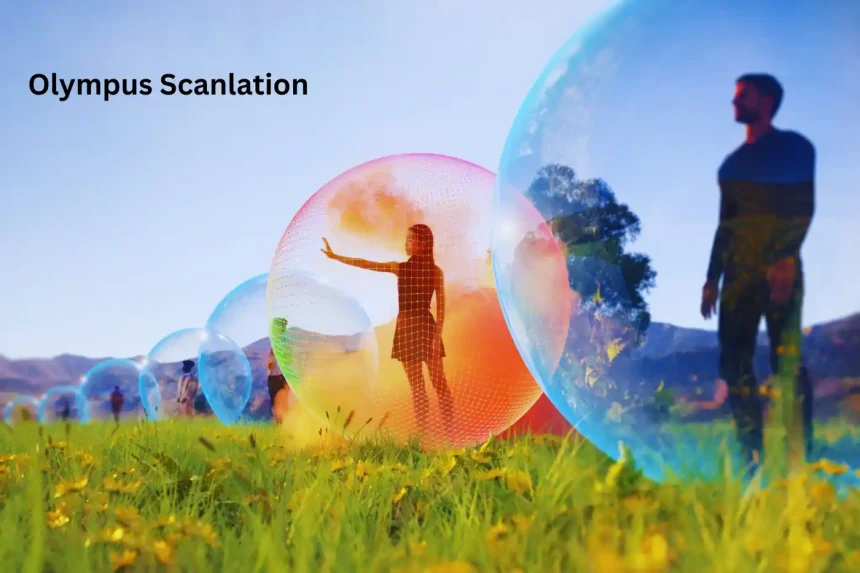Olympus scanlation is a term that has been making waves in the online manga and anime communities. If you’re a fan of manga, webtoons, or anime, you may have come across this term before, but what does it really mean? In this article, we’ll explore what Olympus scanlation is, how it works, its impact on the anime and manga industry, and why it matters for both fans and creators. Let’s dive into the world of Olympus scanlation.
What is Olympus Scanlation?
Definition
Olympus scanlation is a subcategory of scanlation, which refers to the process of translating and editing manga (or other comics) into different languages. Scanlation is typically done by fans, who take the raw manga, often in Japanese, and translate it into English (or other languages) for broader audiences.
The term “Olympus” in this context refers to a specific group, project, or individual known for their quality in the scanlation field, providing not only translations but also high-quality scans and editing of manga content. While “Olympus” doesn’t represent a specific company or organization, it is often used to symbolize a level of excellence in the fan-translation world.
Key Features of Olympus Scanlation
-
High-Quality Scans: Olympus scanlation ensures the manga is presented in the highest possible quality, often sourced from physical manga volumes or high-definition digital versions.
-
Accurate Translation: Beyond simply converting text, Olympus scanlation focuses on preserving the original tone, cultural nuances, and context in the translations.
-
Flawless Editing: The text is edited and placed into the manga images seamlessly, maintaining the artwork’s integrity and flow.
The History of Scanlation
Scanlation has a long history that dates back to the early 1990s when fans began scanning and translating manga to share with a broader audience. Early scanlators typically worked in small, underground circles. However, with the rise of the internet, scanlation became more widespread.
The Rise of Olympus Scanlation
While traditional scanlation groups existed for years, Olympus scanlation emerged as a group or style that raised the bar for quality. The rise of Olympus scanlation coincided with the increasing demand for high-quality translations in niche communities, particularly those interested in lesser-known manga.
-
1990s: Early scanlation groups began translating manga from Japanese into English, targeting a small but dedicated audience.
-
2000s: Online forums and websites dedicated to manga scanlation began to grow in popularity, providing a platform for these translations to spread globally.
-
2010s-Present: The Olympus scanlation style emerged, known for its commitment to top-tier translations and high-quality scans.
How Does Olympus Scanlation Work?
Olympus scanlation follows a multi-step process to bring manga from Japanese to English (or other languages). Here’s an overview of the typical scanlation process:
Step 1: Scanning
The first step in Olympus scanlation involves acquiring the raw manga. This could come from either physical manga volumes or digital versions. The raw scans are then processed for clarity, sharpness, and quality.
-
Physical Manga Scanning: High-resolution scanners are used to scan physical manga pages to maintain their original quality.
-
Digital Manga: If the manga is available in a digital format, it’s directly obtained and adjusted for better image quality.
Step 2: Translation
Once the raw scans are available, a translator works on converting the Japanese text into the target language (usually English). This is a crucial step where cultural nuances, idioms, and tones are carefully preserved.
-
Literal Translation: Ensuring the text is translated accurately.
-
Contextual Translation: Adjusting translations to fit the cultural context of the target language.
Step 3: Editing and Typesetting
After translation, the text is placed back into the manga panels. This requires careful editing and typesetting to ensure that the text fits within the speech bubbles and doesn’t obscure the artwork.
-
Font Selection: The correct fonts are chosen to match the style and tone of the manga.
-
Text Flow: The text should follow the natural reading flow while preserving the original layout.
Step 4: Quality Control
Before publishing, Olympus scanlation groups undergo a rigorous quality control process. This step ensures that the manga is polished, with no errors in translation, typesetting, or image quality.
-
Proofreading: Checking the translation for grammatical errors and ensuring accuracy.
-
Final Edits: Any mistakes or inconsistencies are corrected.
Step 5: Release
Once the final product is complete, the scanlation is released on various online platforms such as forums, scanlation websites, and sometimes even social media. This allows fans to access the translated manga for free.
Why is Olympus Scanlation Important?
1. Bridging the Language Barrier
The primary benefit of Olympus scanlation is its ability to make manga accessible to non-Japanese speakers. By translating Japanese manga into English, Olympus scanlation opens up a world of storytelling to global audiences who otherwise wouldn’t be able to enjoy these works.
2. Supporting the Manga Community
While scanlation is often done without the consent of the original creators, it has become an integral part of the manga community. Many fans consider scanlation as a way of showing support for their favorite manga, especially if official translations are unavailable or delayed.
3. Promoting Lesser-Known Works
Olympus scanlation also plays an important role in promoting lesser-known or niche manga. These works might not have commercial appeal or might not be picked up by official translators. Scanlation groups help bring these hidden gems to light, creating a fanbase that could eventually push for official translations.
4. Speed and Accessibility
While official translations often take time to be released, scanlation groups like Olympus are often quicker, giving fans access to the latest chapters sooner. This is especially appreciated in ongoing series where fans are eager to continue following the story.
The Ethics and Legality of Scanlation
Scanlation, especially high-quality Olympus scanlation, often occurs without the permission of the original creators or publishers. This raises ethical and legal concerns.
-
Copyright Issues: Scanlation is technically illegal as it involves reproducing and distributing copyrighted material without the authorization of the copyright holder.
-
Impact on Sales: Some argue that scanlation may harm sales for official manga publishers, as fans may choose to read fan-translated versions instead of purchasing official releases.
-
Creators’ Rights: On the other hand, creators sometimes support scanlation because it helps spread their work to new audiences, even if they don’t make money from it directly.
Many scanlation groups aim to avoid selling their work and often provide manga for free, arguing that it helps the community and encourages more people to support the official versions once they are available.
Popular Olympus Scanlation Groups
Several groups are famous for their high-quality Olympus scanlations. These groups often lead the way in setting standards for scanlation excellence.
-
Turbotechify: Known for their dedication to providing accurate translations and top-notch editing.
-
Mangastream: A popular scanlation group famous for fast releases of major manga titles.
-
Scanlation Central: A group focused on manga from all genres, including lesser-known and niche titles.
How to Support Olympus Scanlation
If you appreciate Olympus scanlation, there are several ways you can show your support:
1. Officially Support the Manga
When an official translation of a series becomes available, purchasing the official release is one of the best ways to support the original creators and publishers.
2. Donate to Scanlation Groups
Some scanlation groups accept donations to fund their work. These donations help cover costs for scanning equipment, translation services, and other necessary resources.
3. Spread the Word
Sharing your favorite Olympus scanlation works helps bring attention to both the series and the scanlation group.
Final Thoughts
Olympus scanlation has become a key player in the world of manga translation, offering high-quality translations, stunning edits, and a deep connection to the manga community. While it remains a controversial practice, scanlation groups provide a much-needed service for fans around the world. Whether you’re a fan of mainstream manga or niche series, Olympus scanlation plays an important role in the manga ecosystem.
If you’re interested in learning more about the latest trends in technology and anime culture, be sure to check out Turbotechify.com for more articles and insights on related topics.
FAQ
What is the difference between scanlation and official translations?
-
Scanlation: A fan-made, unofficial translation of manga or comics, typically offered for free.
-
Official Translation: A licensed, professional translation approved by the copyright holders of the original manga, often released for sale.
Is Olympus scanlation legal?
Technically, scanlation is illegal as it involves reproducing copyrighted material without permission. However, some argue that it helps introduce new audiences to works that may not otherwise be accessible.
Can I read Olympus scanlations online?
Yes, many Olympus scanlation groups release their translations on online forums, scanlation websites, and social media platforms for free access.
How can I become a part of a scanlation group?
If you’re interested in joining a scanlation group, you can start by learning translation, typesetting, or editing. Many groups accept volunteers who are passionate about manga and translation.


